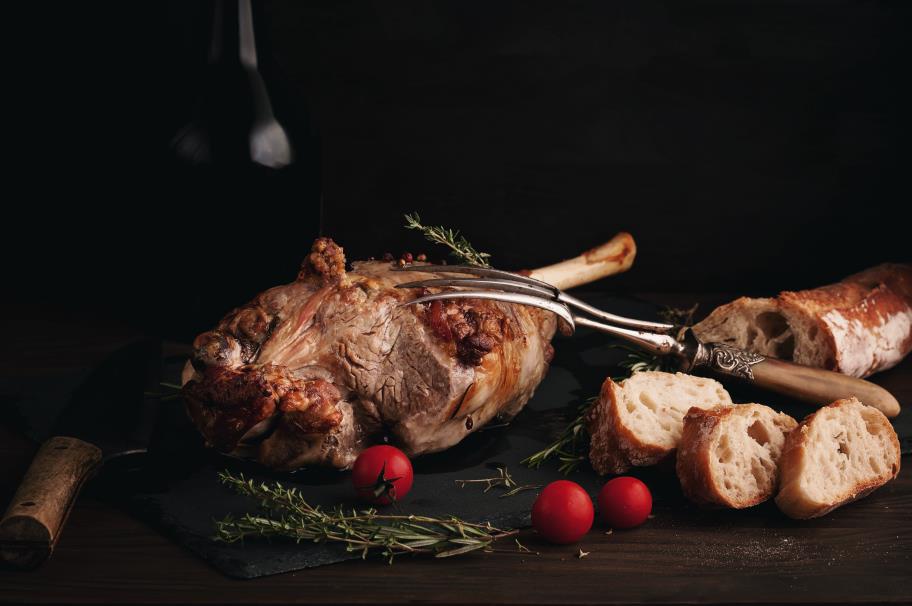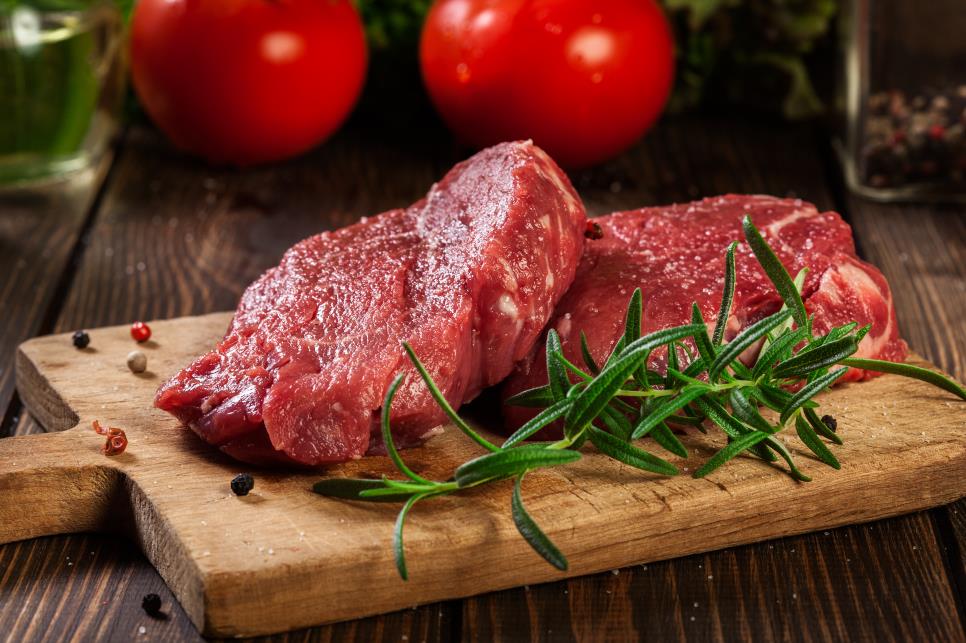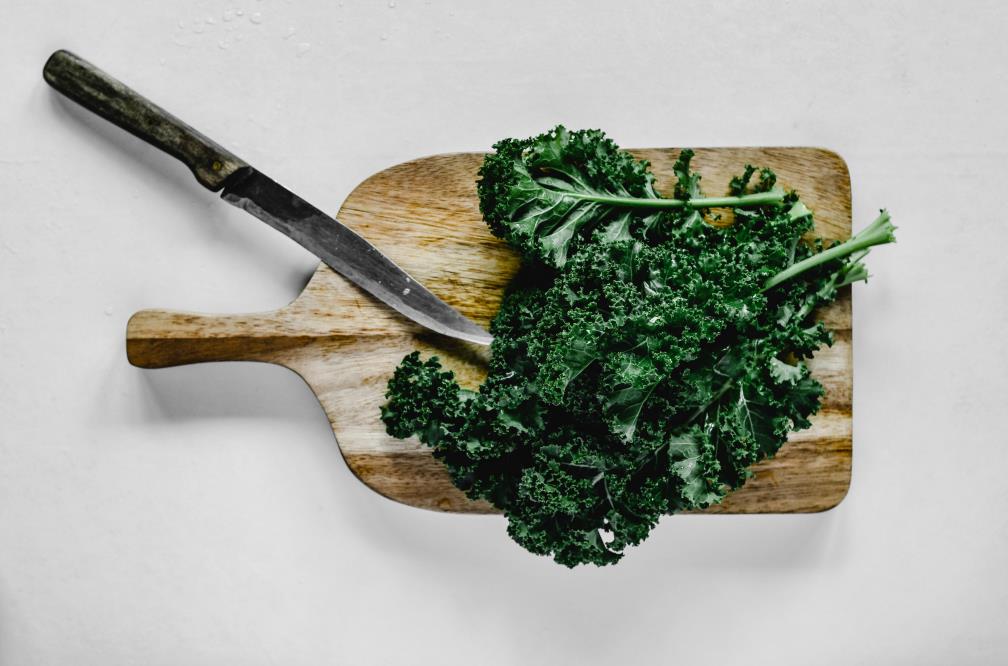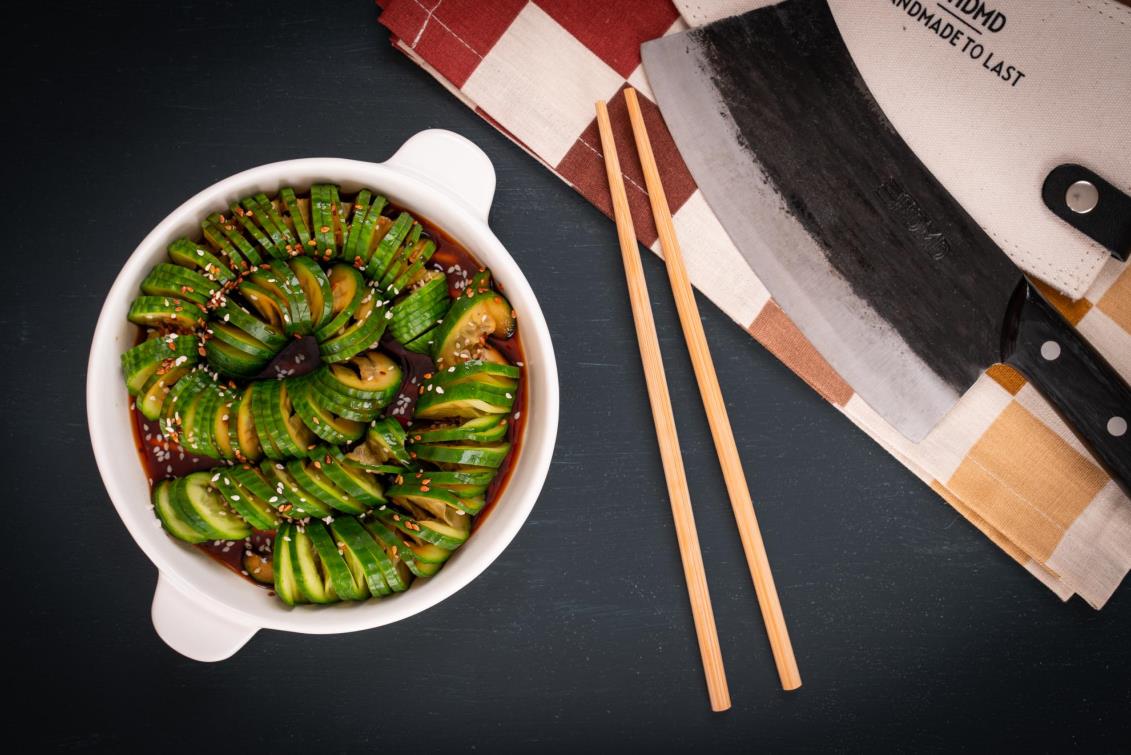Watermelons are one of the world’s most popular fruits. They consist mainly of water, so are an excellent way to hydrate yourself on hot summer days. Watermelons also contain many healthy nutrients and are absolutely delicious. However, before you can indulge in the juicy red flesh, you must first cut the watermelon’s tough outer skin.
There are a few simple ways to prepare a watermelon:
- Cut it into cubes
- Cut it into wedges
- Cut it into sticks
Each of those techniques has unique steps and produces perfect watermelon shapes for many occasions. All will be demonstrated below!
Watermelons are both tough and slippery, so you need to take care when using a sharp knife to cut them. With a little practice, though, the techniques shown in this article will become second nature. After we teach you the cutting methods, we will reveal some brilliant and creative ways to include watermelon in your diet.
Table of contents
How to choose your watermelon
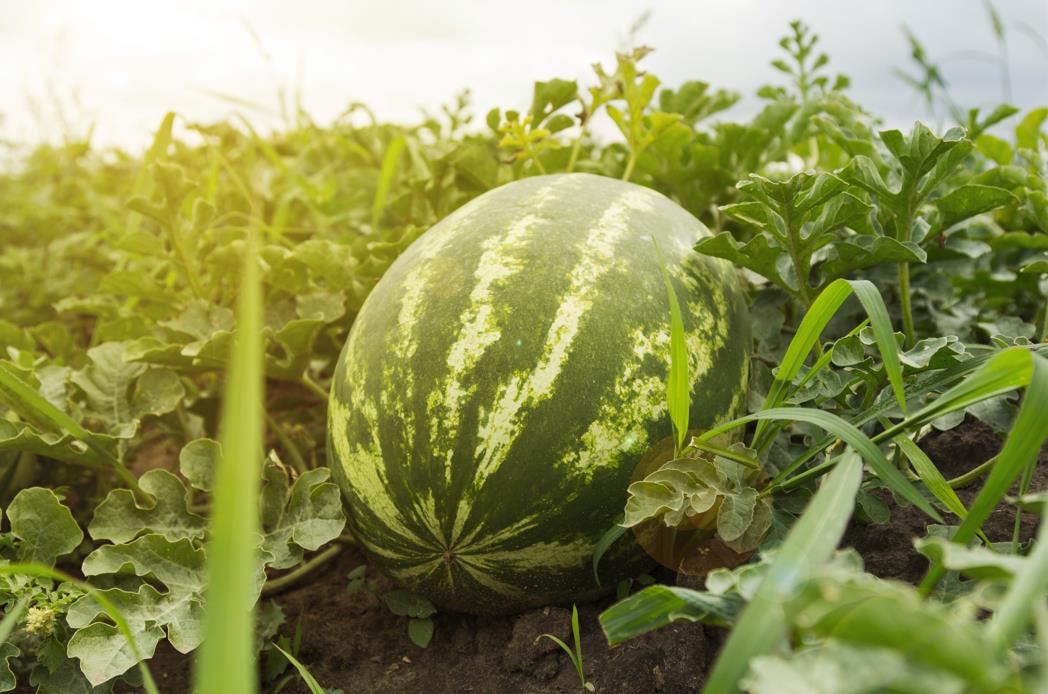
Check the weight
Ideally, a watermelon should be quite dense i.e. heavy for its volume. This usually means that the melon contains lots of water so is both succulent and refreshing. A watermelon that lacks liquid content tends to have dry and unappetizing flesh.
Check the color
A ripe watermelon will have a dark green complexion. A less ripe melon will have a lighter surface color plus a distinctive shine. Unripe watermelons are fine but for maximum flavor, you should wait a few days before cutting them.
Check the shape
An elongated watermelon may have good water content, yet can lack sweetness. Therefore, you should aim to buy a watermelon with a more spherical shape for a more delicious taste.
Check the surface
Is the entire surface firm? If you can feel any soft spots, that could be a sign of mushy or rotten flesh. Make sure you check all areas of the skin before buying your watermelon.
Check the field spot
When watermelons are growing in a field, parts of their surfaces are not exposed to the sun. This is called the field spot. Every melon has this feature with the color ranging from white to yellow to orange. Try to find a watermelon with a darker yellow/orange field spot because this indicates that the melon sat in the field for longer and was picked at the correct time.
Watermelons with darker field spots are riper and offer more flavor.
How to cut up a watermelon
Before attempting any of these techniques to cut your watermelon, you need to make some preparations.
Firstly, ensure that you have either a large clean cutting board or a clean flat surface to cut on. Next, find your knife and make sure that it’s not blunt. A sharp chef’s knife or vegetable knife is perfect for this job. Lastly, wash the melon and dry it completely to prevent it from slipping.
How to cut a watermelon into cubes
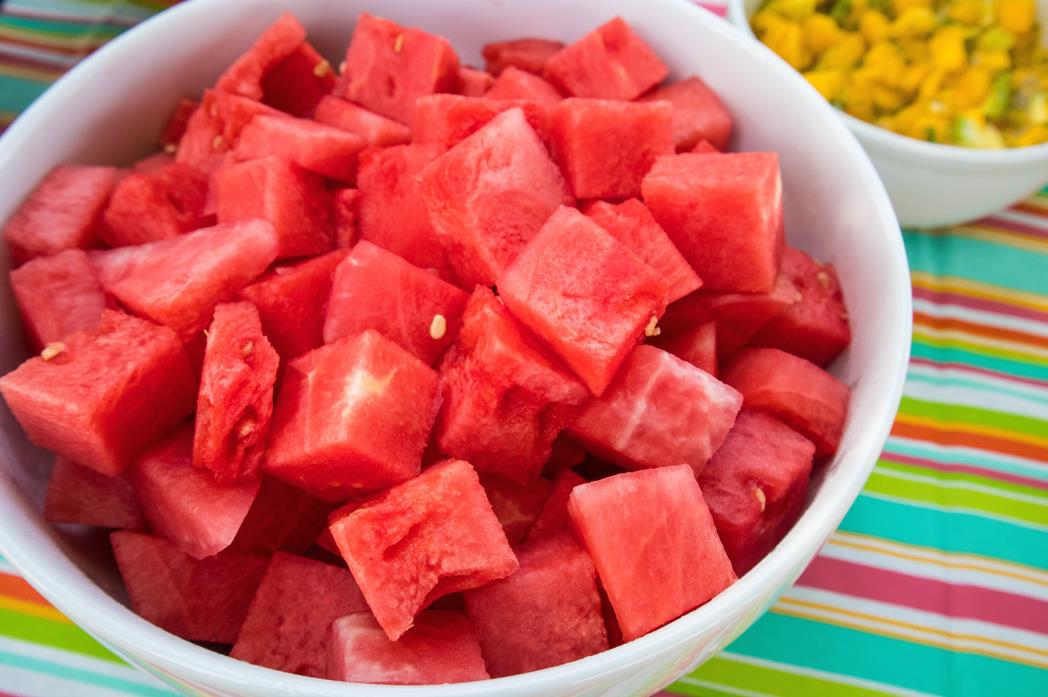
- Place the watermelon on your cutting board and cut it into two halves along the shorter dimension. Hold the melon steady (from above) as you do this. This should produce two equal pieces with circular faces.
- Cut off the ends of both halves so that there’s a flat section on the top of the skin.
- Place one of the halves face down and begin carving the skin off with your knife. Place your knife at the top (where you removed skin in the previous step) and gradually slice down the curved surface of the melon. Cut deep enough to remove the rind and white flesh but not so deep that you remove any red flesh.
- Work your way around the melon until all the skin is removed. Repeat steps 3 and 4 for the other half. You should now have two solid red watermelon halves.
- With the watermelon halves still facing down, slice each of them into thin layers. The number of layers depends on the size of the watermelon, but try to cut each layer around 1 inch thick.
- Now you have several thin sheets of watermelon, it’s time to cut them into cubes! Hold one sheet steady and make a series of parallel cuts to produce sticks (each around 1 inch thick).
- Cut across the sticks (perpendicular to the first direction) until you have watermelon cubes. Repeat steps 6 and 7 for the remaining sheets.
How to cut a watermelon into wedges
- Cut your watermelon in half lengthwise through the stem (along the bigger dimension).
- Place both halves face down and cut them in half again so that you have four quarters.
- At this stage, you have a couple of options. The first method is to cut the quarters into slices with the skin still attached. This will give you nice thin watermelon “pizza slices” which you can eat and then discard the skin.
- The other option is to slice the watermelon while it’s still attached to the skin. Make regular cuts into the flesh of a quarter along the shorter dimension. Then, use your knife to scoop out the wedges by cutting along the curved surface of the watermelon rind just below the flesh. With this method, you may find that some red flesh is left behind on the skin.
How to cut watermelon sticks
- Cut the melon into two halves along the shorter dimension.
- Put one of the halves down on the cut side, then cut through the skin and flesh to produce a row of even slices. You can make them as thick or thin as you like ― 1 inch is a good size.
- Next, you need to cut across the slices (perpendicular to the direction step 2). Use your free hand to hold the slices together as you cut.
- Once you have cut the entire length, you should have a grid of watermelon sticks. Follow steps 2 and 3 for the second half. These sticks are great for parties and gatherings since people can grab a small portion of watermelon for a snack without needing plates or cutlery.
Cut watermelon in any shapes with ease!
Get 11% off and free shipping – limited time only!
Great ways to enjoy watermelon

So, now you have cut your watermelon the way you like it. The only thing left to do is enjoy it. Most people are happy to eat the fruit on its own without anything extra. On a warm day, few things are better.
If you are looking for more exciting ways to enjoy this refreshing fruit, we have a few recipes for you to try. Note that each of these uses watermelon cubes.
Watermelon with salt
This might sound like a terrible combination but in fact, a bit of salt can help to bring out a watermelon’s best flavors.
Sprinkle a reasonable amount of salt on a portion of watermelon cubes and wait for a few minutes. Then the fruit will be ready for consumption. Be careful not to add too much salt, especially if you have high blood pressure.
One benefit of the salt is that it contrasts the sugar in the watermelon so that your tongue tastes even more sweetness. Through a process called osmosis, the salt brings water from inside the fruit’s cells to the surface of the cubes. This makes every bite even more juicy than usual.
Watermelon smoothie
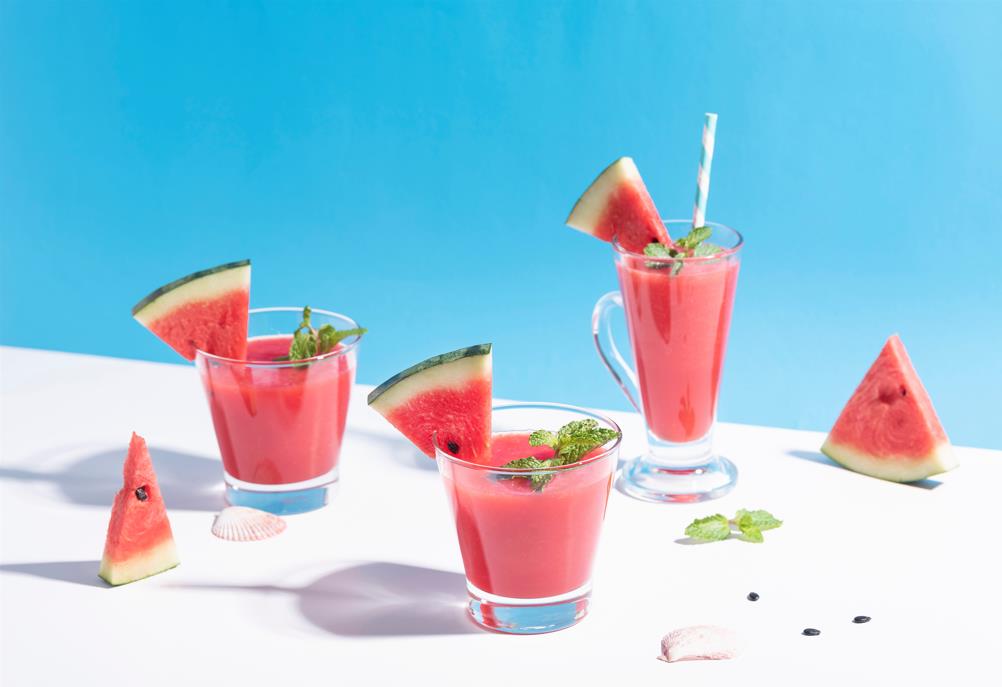
If there is anything more refreshing than plain watermelon it is surely this watermelon smoothie. The key ingredients here are watermelon cubes.
- Freeze your watermelon cubes. Do this by placing them on a tray (separately, so they don’t stick together) and leaving them in your freezer overnight. If you wish to store watermelon cubes for longer, you can transfer them to an airtight container and return them to the freezer.
- Place your watermelon cubes into a blender along with some other fruits. Popular choices include frozen strawberries and bananas. You should also add milk and honey for extra flavor.
- Blend the mixture until you achieve your preferred consistency.
- Serve and enjoy.
What are some nutritional benefits of eating watermelon?
Some people have trouble staying hydrated. They do not drink enough water because they dislike the taste or just forget. Including watermelon in your diet is a fantastic way to ensure that your body gets enough water. The mass of the fruit is 92% water and is much tastier than a plain glass of water.
Watermelon flesh is rich in vitamins A and C. Vitamin A helps your skin’s cells to repair, while vitamin C is necessary for your body to generate collagen. Collagen is a protein that makes your skin strong and elastic. Eating watermelon can potentially reduce blood pressure and cholesterol too.
Watermelons are great, but…
…they’re not easy to cut. Before you can try some recipes and experience the benefits of this wonderful fruit, you need a solid knife to cut with. Our range of handmade kitchen knives is a good place to start.







